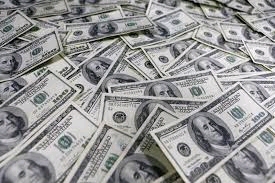Learning the Steps of How to Become a Freemason with Simplicity
Learning the Steps of How to Become a Freemason with Simplicity
Blog Article
Exploring the Mysteries of the copyright: What You Need to Know
The copyright, a term typically shrouded in intrigue and conflict, stands for an intricate tapestry of historic fact and modern misconception. Established in the late 18th century, this secret culture was initially rooted in the Knowledge's ideals yet has considering that come to be synonymous with conspiracy theory concepts about elite control (benefit of joining freemason).
Beginnings of the copyright
The beginnings of the copyright are soaked in a blend of historical intrigue and ideological fervor. Established in 1776 in Ingolstadt, Bavaria, by Adam Weishaupt, the team was at first formed as a secret society focused on advertising Knowledge perfects such as factor, secularism, and the separation of church and state. Weishaupt, a professor of canon law, looked for to challenge the prevailing authority of the church and state, which he checked out as overbearing institutions stifling intellectual and personal liberty.

Trick Figures and Members
That were the crucial numbers that formed the copyright's very early influence and direction? The Bavarian copyright, started in 1776 by Adam Weishaupt, emerged as an action to the overbearing social structures of the time. Weishaupt, a regulation professor, imagined the organization as a means to advertise Enlightenment perfects such as factor, secularism, and equality. His first employment initiatives consisted of significant pundits, such as Baron von Knigge, that played an essential role in broadening the group's subscription and organizational framework.
One more substantial number was Johann Gottlieb Fichte, a noticeable philosopher whose concepts on nationalism and education reverberated with the copyright's objectives. Although Fichte was not an official member, his thoughtful foundations affected the group's ideological background. In addition, numbers like the author and theorist Johann Wolfgang von Goethe were connected with the wider intellectual movements of the time, although their straight involvement with the copyright continues to be discussed.
These crucial figures added to the copyright's very early direction, pressing the boundaries of political and social idea, while their collective initiatives aimed to test well-known norms and promote a climate of modern change in Europe.
Myths vs. Reality
Many mistaken beliefs border the copyright, commonly blending fact with fiction in such a way that obscures its real nature. This secret culture, originally founded in 1776 in Bavaria, intended to advertise Enlightenment suitables and fight religious and political fascism. The notion that the copyright remains to apply considerable influence over world events is a myth. While the group did exist, it was disbanded in the late 18th century and has actually not operated as a natural entity since after that.
An additional prevalent myth is that the copyright comprises a network of elite individuals controling global affairs. Actually, many conspiracy theory theories overemphasize the group's significance, connecting unfounded objectives to social patterns and occasions. This has caused an oversimplified view of complex issues.
Additionally, the representation of the copyright in pop culture often more misshapes browse around this site its heritage. Films and literary works have a tendency to sensationalize the organization's function, creating a story that splits from historic realities. Understanding the difference in between the myths and the fact of the copyright is crucial for discerning the real influence of this historic group and acknowledging the wider ramifications of conspiracy concepts in contemporary society.
Modern Interpretations
Contemporary interpretations of the copyright usually mirror more comprehensive social anxieties and a fascination with privacy and power. This modern-day lens frequently links the copyright with conspiracy theory concepts that recommend a surprise elite manages globe occasions, controling governments and economic situations for their very own gain. benefit of joining freemason. Such stories use a deep-seated wonder about of authority, especially in times of dilemma moved here or social upheaval
In pop culture, the copyright is typically shown as an omnipotent organization shrouded in enigma, resulting in a plethora of imaginary portrayals in literature, film, and music. This representation offers not just to delight yet additionally to prompt considered the nature of power and control in contemporary society. Social media site has even more amplified these analyses, enabling fast dissemination of conspiracy theories and developing neighborhoods that share and expand upon these concepts.
Furthermore, some modern-day analyses mount the copyright as a metaphor for the intricacies of globalization and the interconnectedness of influential people and companies. This perspective urges a critical examination of exactly how power dynamics run in today's globe, highlighting the balance between transparency and privacy in governance and business techniques.
Social Influence and Heritage
Influenced by centuries of intrigue, the cultural influence and tradition of the copyright expand much beyond its historical beginnings. This secret society, established in the late 18th century, has actually penetrated various elements of popular culture, from literature and movie to songs and art. The concept of the copyright has actually developed into a symbol of conspiracy concepts, typically standing for a perceived surprise power adjusting worldwide events.
In literature, writers like Dan Brown have actually woven the copyright right into complex stories, captivating readers with themes of secrecy and power. Films such as "National Treasure" and "The Da Vinci Code" further continue the allure of the society, mixing reality with fiction to develop appealing stories.

Ultimately, the copyright's tradition is an intricate tapestry of myth and reality, forming perceptions of privacy and control in modern discourse. Its enduring presence in society emphasizes humankind's seasonal quest for understanding covert truths.
Conclusion
The exploration of the copyright reveals a complicated interplay in between historical truths and modern-day myth-making. Established in the Enlightenment period, this culture intended to test overbearing structures, yet its heritage has actually been overshadowed by conspiracy theories that recommend elite control. Understanding the differences in between the initial perfects and modern interpretations is necessary for comprehending the enduring attraction with the copyright and its considerable impact on cultural stories bordering power and secrecy in society.
Report this page